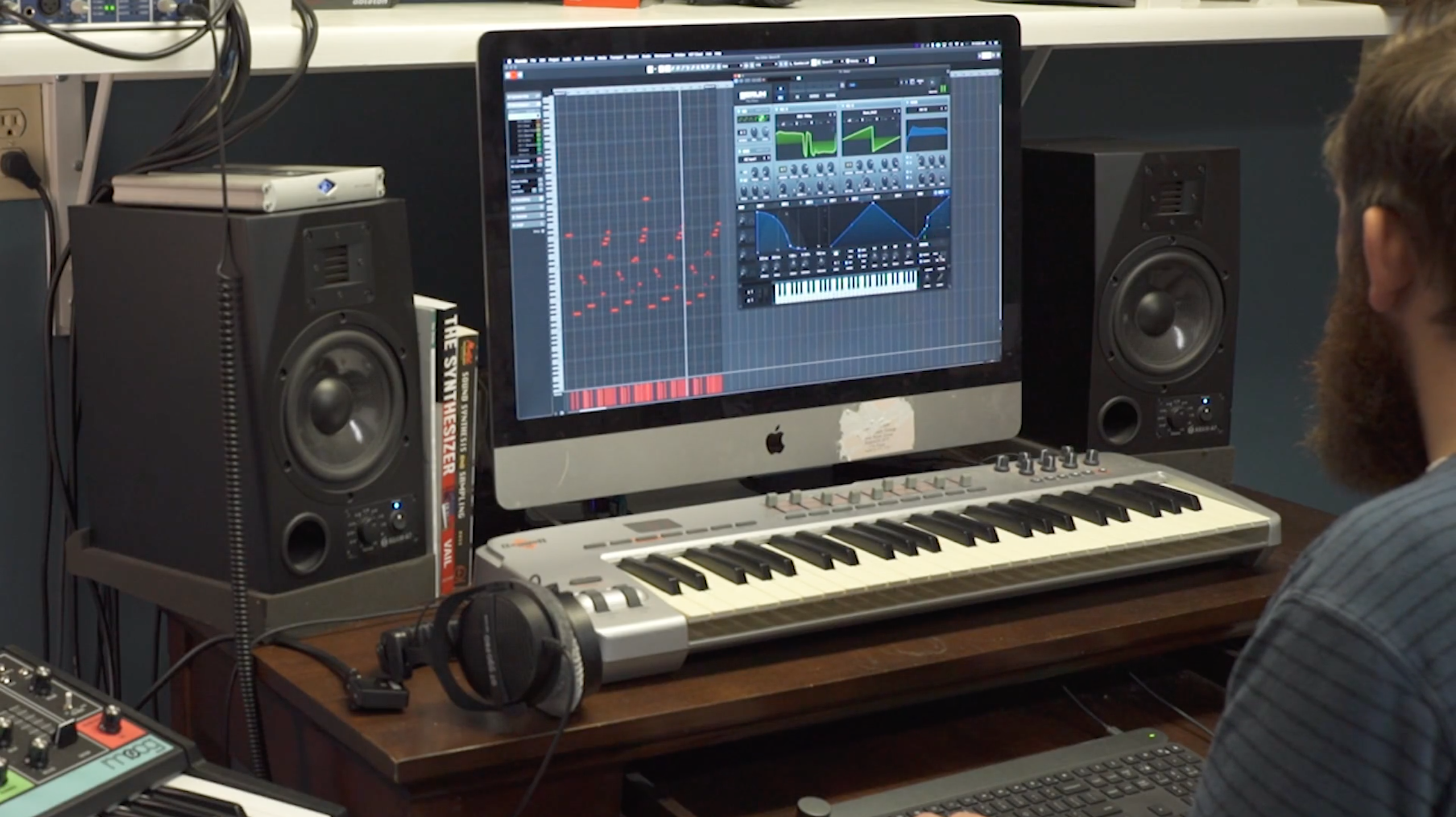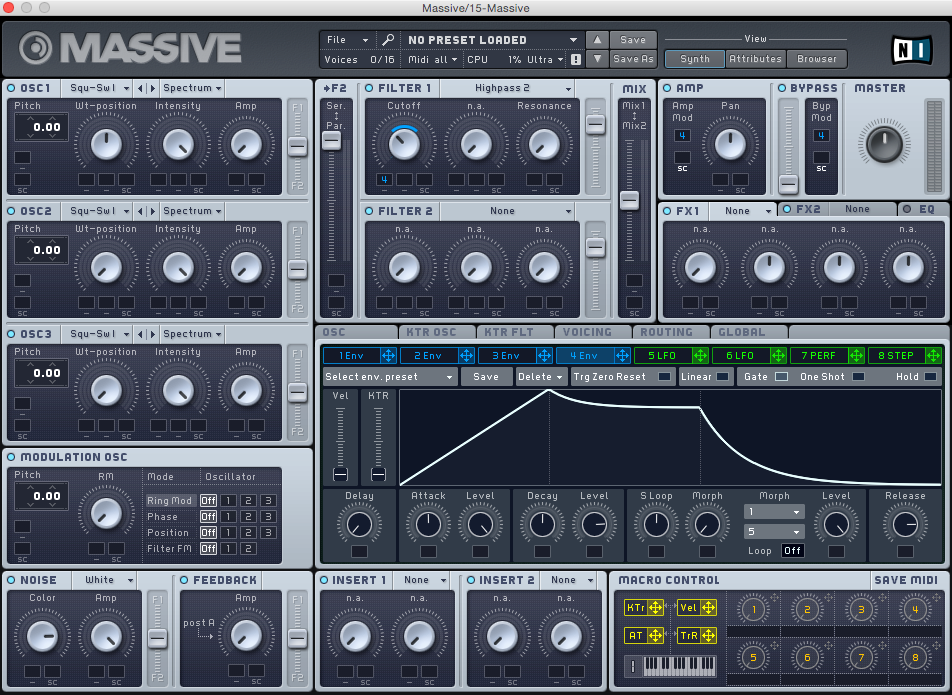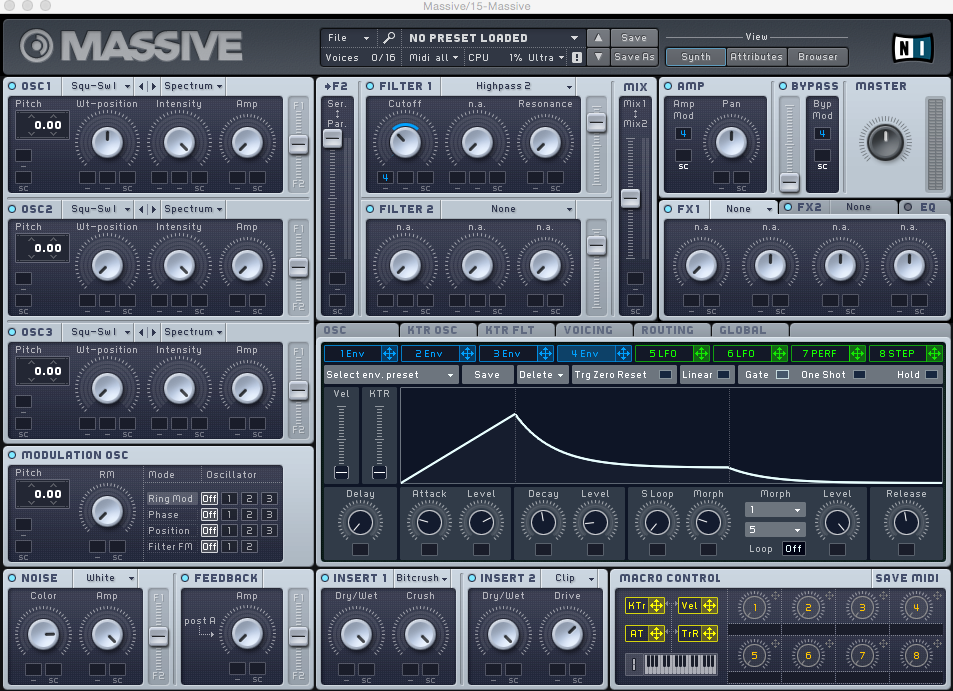+ Learning about synthesis? Soundfly’s got a definitive new online course called Advanced Synths and Patch Design For Producers! Preview for free and subscribe for access.
White noise just might be the most versatile secret weapon a producer has at their fingertips. It can be used in filter sweeps to build anticipation for your big EDM beat drop moment; it can put babies to sleep; and if you want, you can mimic the timbre of R2D2’s classic synthesized voice in Star Wars when you combine it with a couple oscillators.
When sculpted, massaged, and manipulated, white noise can really turn into anything you want — through a band pass filter, you can tune it to create a wonderfully resonant oscillating voice; run through the right type of envelopes, it can make up an entire percussion section. The studio is your delicious oyster.
This mini-tutorial, though, is going to focus on one specific use for white noise: as a steam machine.
And no, I’m not talking about the Daft Punk song! I’m talking about using white noise to manufacture the soft hissing sounds of misty clouds of steam. Think of the sound of anything from the shush of your radiator to the sound of pressurized cannons firing off at a rave. White noise can make these sounds (and quite a few in between), and they, in turn, can be put to use across a very wide variety of productions to add ambiance, character, and a bit of emphasis for right when the chorus hits.
We’re going to be working in Massive VST (you have Massive, right?), but the basic premise of everything to follow will be applicable to settings found on synthesizers and soft synths of all kinds. But first, don’t forget to check out Soundfly’s online course, Advanced Synths and Patch Design for Producers, and learn how to move beyond presets to create a wide array of scintillating synth sounds for your productions.
When you think about the sound of steam hissing…
Generally there are at least two of three main components to the sound. There’s the soft, relatively gradual attack, followed by a variable sustain depending on the circumstance, and a long, gentle release. The noise itself, generally, contains mostly mid to high frequencies, and sometimes can sound a little shrill.
So how do we go about creating this?
First, you’ll want to utilize either a sampler with a nice long sample of white noise loaded in, a synthesizer or soft synth VST (like Massive), that allows you to trigger white noise by holding down a key, or sustained MIDI note. What you should be hearing at this point is just a good ol’ fashioned wall of white noise, held out as long as you like — with no form or shape to it, yet.
Next, let’s address the amplitude ADSR envelope on either your synth or sampler, and dial in the settings to create whatever type of steam we want!
To start, let’s create a more traditional steam sound. In Massive, I’ve turned down the amplitude of all my oscillators, and adjusted the color of noise to suit my taste. I’ve then opened up Envelope 4 (the default envelope for controlling the amplitude of the sound) and bumped the attack and release times up to about 50% and 75%, respectively. Trigger the synth by holding down a note on your MIDI keyboard, entering a note into the MIDI sequence, etc., and this should get you a nice, gentle rise of steam.
For a shorter burst of steam, something akin to your radiator spurting, shorten the attack and release times, and drop the decay level such that the rise and fall of the audio is much quicker. To add a bit more of an old-timey feel, I’ve found that adding Massive’s Bitcrusher and Clipper in can increase the effect.
Now for the final part: how to sculpt your noise into something resembling steam!
This part is actually easier than you might imagine. In your DAW of choice, or VST, grab an EQ, or a high-pass filter, and sweep out all of the low frequencies in the white noise. In Massive, the eagle-eyed among you may have already noticed that I’ve internally routed the noise through a high-pass filter, and routed a small amount of the Envelope 4 to it as well, to provide some natural movement. Any filter will do, though!
Although in most instances you would want those lower frequencies of the white noise to fill out the sound, steam is much lighter, and so it needs to be handled more gently. The density of the full white noise spectrum would clutter the frequency space too much.
So, to create this levity, we filter out the low end. For a final touch of ambiance, add a nice room reverb of your choosing onto the noise, so that you can place your steam in the virtual environment that best suits your needs! Voilà! Now you’re staring up at a synthesized sky full of misty clouds of steam!
This process is a great template for making a variety of sound effects to color your productions. To take this a bit further, increase the attack time of your amplitude envelope and all of a sudden you have a great, simple riser! Add a tempo-synced delay or reverb after it to create evolving percussion tones. Or, sidechain it to your kick to create something rhythmic that flows with the beat of your track.
Want more?
Continue learning with hundreds more lessons on mixing, DIY home audio production, electronic music recording, beat making, and so much more, with Soundfly’s in-depth online courses, like The Art of Hip-Hop Production, Modern Mix Techniques, and of course Advanced Synths & Patch Design (to name a few). Subscribe to get unlimited access here.








